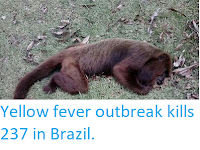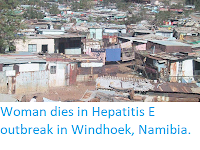Authorities in Botswana have issued a warning to trading partners after a possible Foot-and-Mouth outbreak in Ngamiland District, in the northwest of the country. As yet only five animals have shown symptoms of the disease, and these have yet to be confirmed by laboratory testing, but all slaughter and movement of animals from the Sehithwa, Toteng, Bodibeng, Kareng and Semboyo areas has been suspended as a precaution, as has all exportation of meat from animals in Ngamiland District, and a program of vaccinations begun as a precaution.
Cattle in Ngamiland. The Voice.
Foot-and-Mouth is caused by Aphthae epizooticae, a form of Picornavirus (single-stranded RNA virus with an icosahedral capsule but no lipid membrane), i.e. a member of the group that also causes Hepatitis A, which is generally transmitted through physical contact, though it can be passed on by aerosol, or by with inanimate objects that have been in contact with infected animals, notably Human clothing. The disease is seldom fatal in adult animals, but causes ulceration of the mouth and feet, which can lead to a long-term decline in the health of infected animals, including lameness and weight loss, for which reason many countries impose a complete ban on importing animals and products from areas where the disease is present, with severe economic consequences.
Cattle production is a mainstay of the Botswanan rural economy, with thousands of jobs dependent upon it, and significant exports of beef to Europe, as well as beef and livestock to other Southern African countries. This industry has repeatedly been struck by outbreaks of Foot-and-Mouth and other Cattle diseases endemic to the region, which, if not contained rapidly, tend to result in large scale culls of livestock (as in other Cattle-farming nations). In 1995 an outbreak of Cattle Lung Disease led to the slaughter of the entire herd of Ngamiland District.
See also...
Follow Sciency Thoughts on Facebook.







